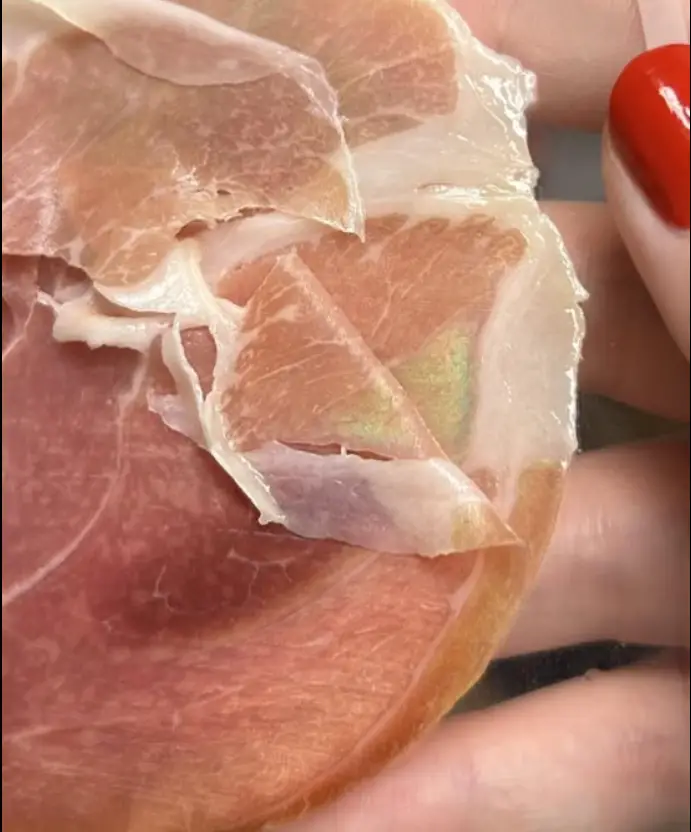Is the Rainbow Sheen on Your Ham Safe to Eat? Here’s What You Need to Know
You’ve just sliced a piece of ham and noticed something unusual: a rainbow-like sheen shimmering on the surface. It’s pretty, but also a bit perplexing. Should you toss the ham out, or is it safe to eat? Let’s dive into the science behind this iridescent effect and why it’s actually no cause for concern.
Why Does Ham Have a Rainbow Sheen?
The rainbow-like sheen on ham is caused by a phenomenon known as light diffraction. Essentially, light interacts with the natural muscle fibers and proteins in the meat, creating a prism effect that reflects various colors, much like how a soap bubble or a CD might appear to shimmer in the light.
Here’s how it works:
Muscle Structure:
Ham, like all meats, contains a specific arrangement of muscle fibers and proteins. When the meat is sliced thinly, especially when processed or cured, the way light interacts with these fibers can create the rainbow effect.
Cured Meats:
The curing process—which often includes salt, nitrates, or nitrites—preserves the structure of the meat and enhances its ability to reflect light. This is why you might notice the effect more prominently in cured meats, such as ham.
Is It Safe to Eat?
Yes, it’s completely safe to eat ham with a rainbow sheen. The iridescence is a natural result of the meat’s composition and preparation, and it doesn’t indicate any spoilage or contamination.
However, it’s still important to ensure that the ham is fresh and safe to eat. Here’s how you can check:
- Expiration Dates: Always confirm the “use-by” or “sell-by” date.
- Smell: If the ham has a sour or unpleasant odor, it could be a sign of spoilage.
- Texture: Ham should not be sticky or slimy. If it feels this way, discard it.
Common Misconceptions
Not Chemical Additives:
The rainbow sheen is not caused by artificial additives or chemicals. It’s simply a physical phenomenon based on the meat’s natural structure and preparation.
Not a Sign of Spoilage:
Unless the ham has an off smell, slimy texture, or visible mold, the rainbow effect doesn’t signal that the ham has gone bad. It’s just a visual quirk that’s harmless.
How to Minimize the Rainbow Sheen
If the iridescent effect bothers you, there are a few simple ways to reduce it:
- Cut Thickness: Slice the ham thicker, as thin slices are more prone to the light diffraction effect.
- Storage: Store ham tightly wrapped to prevent oxidation, which can enhance the sheen.
- Cooking: Cooked ham typically shows less iridescence compared to raw or lightly processed ham.
The Science Is Beautiful
The rainbow sheen on your ham is a perfect example of how light interacts with natural structures. It’s a harmless and fascinating phenomenon that doesn’t affect the flavor, texture, or safety of the meat. Next time you see a shimmering slice of ham, you can confidently enjoy it, knowing it’s a safe and natural effect. 🌈🍴
Happy eating, and enjoy that colorful slice of ham!
